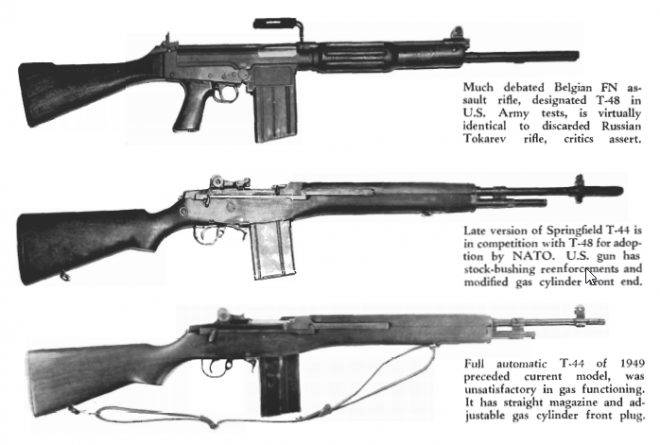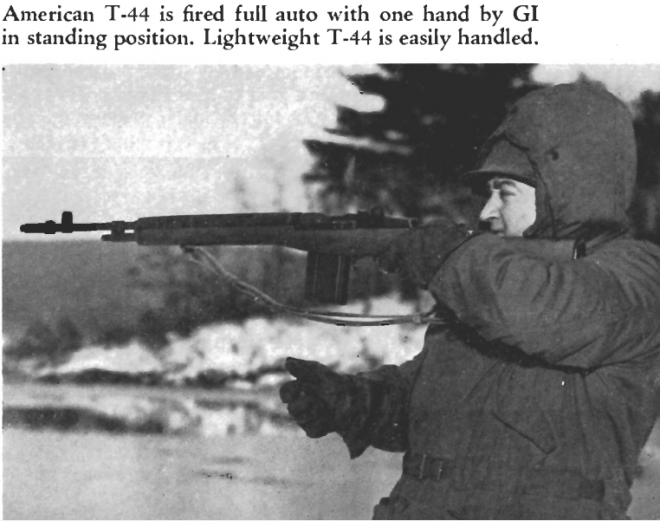Controversy over small arms is nothing new. Back in the early 1950s, when the 7.62x51mm was called the “.30 Light Rifle” and NATO still believed it could achieve the goal of a universal standard rifle, there was (quite naturally, given the large number of parties involved) what was called more than once “The Great Rifle Controversy”. An apt name, I think.
A good time capsule back to that era is the May 1955 issue of Guns Magazine, which covers this controversy with an article of the same name by Williams C. L. Thompson. While the rifle’s featured in it are familiar, the opinions of the writers are not. For example:
But men high in private industry-the production genius of US arms makers have not given up their fight to debunk the FN. And they have an ace in the hole. Stated simply, it is this: The FN is essentially identical to a Russian rifle abandoned by the Soviets during World War I1 as unreliable! The Belgian gun the US. is considering for adoption is of the same pattern as the Russian Tokarev, a gas-operated shoulder rifle of tipping bolt design, resembling in some principles the old Savage Model 99 lever rifle so familiar to American sportsmen. And to shoot in that rifle, which the Army test officers presently designated the “T-48,” we have adopted a cartridge which is remarkably similar to the .300 Savage, old, reliable deer killer!
Today the FAL is not considered an unreliable weapon; indeed, civilian-owned rifles like “Ol’ Dirty” have given the gun a reputation for tremendous reliability. Of course, at the time this article was written, the FAL had only just been adopted by the Canadians. Continuing:
Fighting in cold so extreme that rubber snapped like glass, the Russian troops found their lovely automatics did not run so well. Frost-proof oils and incantations alike proved unavailing; the Tokarevs were retired in favor of slam-bang machine pistols and the ancient bolt-action Nagant rifles.
Perhaps that was a little exaggerated. It is true, however, that the SVT was produced in dramatically lower numbers after 1943, and it is true that reliability was a factor in this. However, the Soviets were also heavily besieged by the Germans, and in need of every possible weapon, even if that meant producing older, but cheaper designs instead of newer more sophisticated ones. The next Soviet rifle design to see service, the SKS, was very similar to the SVT, and gave many years of good service to the Russians, Chinese, and American hunters alike. They also say a few words about the ancestor of the M14, the T44:
“Lightweight” and “easily handled” are not terms you normally hear these days to describe the M14. The GI in the photo has quite the grimace on his face, as well, as he struggles to hold up an eleven pound automatic rifle with just his shooting hand. I can’t imagine full auto accuracy was good from this position.
Though I’ve mostly covered those perceptions that changed, there is still a lot of correct information in that article. The article helps date the extended and often laborious NATO rifle trials between their commencement in 1950 and the eventual American adoption of the M14 (which, coming after several NATO nations’ adoption of the FAL, sealed the fate of the NATO standard rifle) in 1957. For all its faults, I definitely think the article is worth a read.
 Your Privacy Choices
Your Privacy Choices

